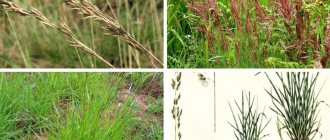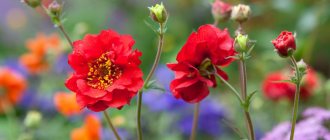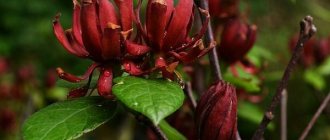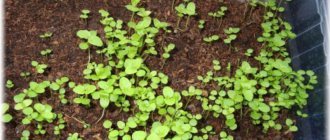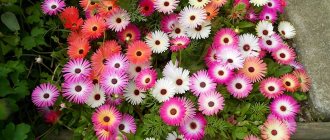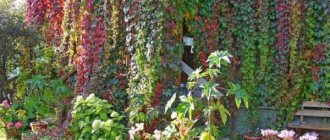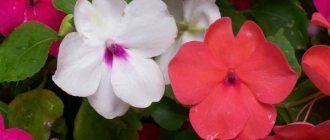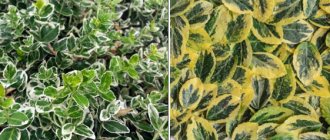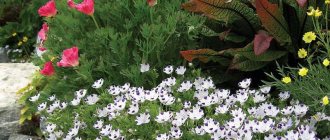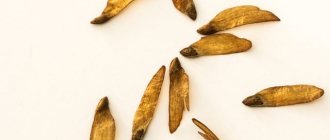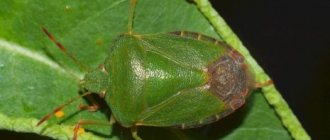An interesting and decorative plant, gray fescue forms fluffy bushes from tough foliage, bringing harmony to flower arrangements in garden plots. Thanks to the spherical shape of the plant and its special steel color, this crop in landscape design is an excellent partner for various types of flowers.
Description of gray fescue
This crop belongs to the Cereals family. The hardy plant is found from subtropics to regions with relatively cold climates. Gray fescue grass grows thanks to underground creeping shoots, forming turf in free areas. Here is a brief biological description of it:
- The color of the foliage is different shades from silver-blue to gray-green.
- Depending on the climate, the color of evergreen leaves may differ; with the arrival of cold weather, the color of the leaves fades.
- The width of narrow leaves is up to 15 mm.
- The height of the bushes is 15-60 cm.
- The shape of the bushes is spherical.
- Inflorescences are spikelets.
Gray fescue - characteristics
The leaves of the plant are formed in the form of twisted tubes for economical consumption of moisture. The root system is small in volume and consists of numerous thin roots. In landscape design, the shape of ornamental grass bushes and colors play an important role. In one place, the perennial gray fescue lives up to 5-10 years. The panicle inflorescences are inconspicuous, but do not spoil the overall impression.
Low-growing spherical bushes perfectly serve as a ground cover crop. Fluffy “hedgehogs” resist weeds well and prevent the substrate from drying out in flower beds. The popularity of fescue is explained by its high decorative value until the coldest weather. The appearance of bald spots due to freezing or drying out is easily eliminated by updating the plantings using several cuttings obtained from the mother plant.
A responsible gardener should know how blue fescue blooms:
- Fescue spikelets form in the first months of summer (June-July).
- Inflorescences hover above the bushes on thin straight stems.
- Flowering period – June-July.
- The color of the loose panicles is gray-green at first, and light brown at the end of the season.
- The length of the spikelets is 5-15 mm.
The best types of fescue with descriptions and photos
Blue fescue Festuca glauca
Blue fescue planting and care Blue fescue photo
The most popular species, which has earned the attention of gardeners for its unusual blue tint. Separately planted bushes, growing, form spherical clumps resembling fluffy pompoms. The thin, sharp leaves are tough enough to maintain their shape even in strong winds and precipitation. During flowering, rare paniculate inflorescences beautifully highlight the round balls of leaves. The height of the bushes is from 30 to 60 cm, depending on the variety.
Myra fescue Festuca mairei
Fescue Myra Festuca mairei photo
It adds a special romanticism to any flower garden, diluting the colors and introducing touches of naturalness, non-interference of man into the harmony of nature. Beautiful spheres with a somewhat tousled appearance pair effectively with bright flowers, such as echinacea.
Meadow red fescue Festuca rubra
Red fescue Festuca rubra photo
Lawn grass reaches a height of 60 cm and tolerates cutting well. It has long been a pasture plant, and only recently landscape designers have shown interest in it due to the unusual reddish hue of the spike-shaped inflorescences.
Filamentous fescue Festuca filiformis
Filamentous fescue Festuca filiformis photo
The incredibly thin needle-shaped leaves of this plant look beautiful next to other plants, providing an expressive background for the more colorful representatives of the flora. Landscape designers are happy to use filamentous fescue in group plantings, adding elegance and unique charm to the compositions.
Glacial fescue Festuca glacialis
Glacial fescue Festuca glacialis photo
An excellent plant for rock gardens: with its hard, needle-like leaves, the grass looks very impressive against the backdrop of large decorative stones. The spherical compact shape is especially attractive for its complete appearance. Paniculate spikelets-inflorescences with a light lilac tint turn the bush into a fantastic fireworks display.
Siberian fescue Festuca sibirica
Siberian fescue Festuca sibirica photo
A very frost-resistant perennial that can be grown in the harshest conditions. This fescue is planted as lawn grass and as an ornamental grass in flower beds. The grass is low, up to 20 cm in height, the paniculate spike-shaped inflorescences have a reddish tint. It grows even on poor rocky soils and does without watering.
Valis fescue or fescue Festuca valesiaca
Valis fescue or fescue Festuca valesiaca photo
Reminiscent of Siberian, it grows very densely in the soil, forming strong turf. The density of green bristles is achieved through annual self-seeding, thanks to which dying old bushes are replaced by young ones. Smothers any weeds, aggressively conquering territories. Very decorative during the flowering period: light gray panicles-inflorescences stand out effectively against the background of dark green needle-like leaves.
Tall fescue Festuca arundinacea
Tall fescue Festuca arundinacea photo
This is a lawn grass with high resistance to trampling. It has a well-developed, powerful root system, thanks to which it is able to obtain moisture from the deep layers of the soil even during dry periods. Retains an attractive appearance and does not fade even in extreme heat. Withstands haircuts very well. Thanks to its many advantages, it has earned special love among landscape designers.
Sheep fescue Festuca ovina
Sheep fescue Festuca ovina photo
This is also a lawn grass characterized by intensive growth. The powerful roots of fescue intertwine the upper part of the soil so much that it is not subject to erosion during the rainy season. The grass is resistant to trampling, tolerates frequent cutting, quickly growing young greenery.
Meadow fescue Festuca pratensis
Meadow fescue Festuca pratensis photo
High frost resistance and excellent endurance in any conditions have gained high popularity for this lawn grass, which has been included in various mixtures. It tolerates haircuts well and quickly restores vegetative mass. Very decorative even in group plantings in a flower bed.
Gray fescue varieties
Varieties of this crop differ in the intensity of foliage color, the height of spherical bushes and panicles with peduncles. As an example, let's look at several of the most common varieties of gray fescue:
- Gray fescue Freddy
- leaves are bluish-green, bush height is up to 20 cm, peduncle height is up to 50 cm. - Gray fescue Elijah Blue
- narrow, emerald blue foliage, gray-green inflorescences, bush height 25-30 cm. - Gray fescue Varna
is a gray-blue annual, famous for its drought resistance, the height of hemispherical bushes is up to 30 cm. - Blaufuchs fescue
- steel-blue foliage, bushes up to 20 cm, peduncle height up to 35 cm. - Fescue Festuca cinerea
- bushes 25-30 cm, tall peduncles up to 60 cm, width of semicircular bushes 35 cm.
Characteristics of the plant
Fescue belongs to the grass family and is a herbaceous perennial.
It grows in the form of a compact bush no more than 40 cm high, consisting of many narrow long leaves. The width of a fairly rigid leaf plate does not exceed 1.5 cm, and this is at the base. Towards the top the leaf narrows and ends almost like a needle. There are so many such needles that from a distance the bush resembles a pillow or a furry ball. Moreover, glacial fescue has leaves of almost the same length, due to which the “cushion” has an almost ideal round shape. The linear leaves are colored green-blue with a bluish tint characteristic of all fescue trees. In mid-summer, tall thin peduncles appear in the center of the bush, on which loose panicles about 6 cm long sprout. At first they are the same color as the foliage, and as they bloom they become brown. By autumn, the seeds ripen - small grains up to 5 mm long.
Do not confuse glacial fescue with blue fescue - these are two different varieties! Blue fescue can be distinguished from the first by its softer foliage. In addition, the bush itself is smaller, and the color is predominantly bluish, without a hint of the characteristic “bluishness” of the Titmouse.
Gray fescue - planting seeds for seedlings
Planting material can be selected independently or purchased at specialized points. Crops of the Cereal family reproduce well by seeds; the sowing process is not very complicated. The disadvantages of this method are the risks of getting a re-grading with the loss of valuable characteristics of the variety (frost resistance, special foliage color), and a longer period of growing seedlings in comparison with cuttings.
Seed method of propagating gray fescue in open ground:
- When collecting material yourself, you need to select large ripe spikelets, cut and dry them, then remove the seeds.
- Some varieties of fescue have low frost resistance. When planting a large flower bed, you should use material selected from plants that have already been tested and acclimatized in the area.
- Next, the seeds are treated with potassium permanganate or other fungicides.
- The blue fescue plant is sown to a depth of 5 cm with an interval of 10 cm.
- It is better to place several seeds in each hole.
- Sowing is allowed before winter or with the onset of warmth in spring.
- Next, the holes are filled in, the soil is compacted a little and watered.
- The time before emergence is up to 2-3 weeks.
Obtaining gray fescue seedlings in a greenhouse:
- Light and moisture-proof substrate is poured into the boxes.
- Seeds should be placed on top without immersion in the ground.
- We moisten the soil and seeds with a spray bottle.
- The containers are covered with film and placed in a warm and well-lit place.
- After the shoots emerge, we transfer the containers to a cool place, for example, on a windowsill in the veranda. If you leave the seedlings in a warm place, they will quickly stretch out and fall.
- Picking is done at the stage of 2 true leaves in 100 g cups.
- After about a month, the seedlings begin to bush well; young seedlings can be planted in larger diameter pots or directly in the flower bed.
Reviews and advice from gardeners
Most housewives who grow fescue from seeds say that it is not at all difficult, the main thing is to follow the following rules when growing:
- In order to get adult plants from seeds earlier, you must first plant them in a box and then transplant them into the soil. But the seeds take root well in open ground, they just germinate a little later.
- You should be careful when watering fescue; under no circumstances should you allow the soil to become waterlogged. It is very important to take into account the humidity level and weather conditions of the region.
- The plant tolerates winter very well; it does not even need to be covered if the soil is of average moisture.
- As for replanting perennials, this procedure must be performed every 3 years, so they will not get used to one area and die off.
- After winter, it is imperative to destroy dried leaves.
How to plant gray fescue seedlings?
To guarantee the production of strong seedlings, the seedling method is traditionally used. In this case, planting gray fescue is done using the following relatively simple technology:
- Transshipment into the flowerbed is carried out with the arrival of stable heat, but before the onset of extreme heat.
- The site is selected to be sunny and dry; in partial shade or a damp place the plant may become sick and develop poorly.
- Transshipment into the hole must be carried out while preserving the earthen clod.
- We water moderately, without creating a thick layer of marshy slurry around the bushes, and lightly compact the soil.
- Gray fescue bushes tolerate replanting normally, take root well and quickly gain strength.
Fescue care
Watering
Fescue is drought tolerant, so it is watered only when absolutely necessary when there has been no rain for a long time. Do not allow water to stagnate in the soil, as this will cause some of the plant’s stems to die and rot to appear on the roots.
Fertilizer
Feeding should be infrequent. Even if the bush grows on depleted soil, it will be enough to feed it 1 or 2 times during the season. To do this, take a complex mineral fertilizer for decorative deciduous crops, and you will need only ½ part of the dose recommended by the manufacturer.
Trimming
When the snow melts in spring, trim off all dried leaves and stems from the bush. Then clear it of debris using a rake. If you don't need the seeds, cut them off after the inflorescences have dried.
Wintering
Most fescue varieties are characterized by high winter hardiness. But if winters in the region have little snow and frost, then in late autumn the bushes are covered with a layer of fallen leaves and dry straw. Old bushes are less resistant to frost compared to young ones.
Diseases and pests
The plant is resistant to pests and diseases. However, if it grows in a flooded or damp area, it may be affected by a fungal disease.
Gray fescue - care
Maintaining an unassuming plant in good condition does not take much effort. The main agrotechnical measures include the following points:
- In warm regions, the plant overwinters without serious shelter; in areas with harsh winters, plantings are covered with fallen leaves or straw.
- When cared for in the spring, the gray fescue is delicately cleaned of debris and dead particles.
- Watering is not carried out often, only when the top layer of soil is very dry, stagnation of water leads to rotting.
How to feed blue fescue?
This crop requires almost no additional nutrition. Even on relatively poor soils, blue fescue develops normally with 1-2 feedings per season. You can use soluble complex preparations marked “For ornamental foliage plants.” Gardeners recommend only 1/2 of the working dose; excess fertilizer has a negative impact on the decorative appearance of the plantings. It is more convenient to use liquid products “Agricola Aqua”, Pokon, Bona Forte, Etisso.
Is it possible to cut blue fescue?
During the summer, the spherical bushes gain strength; all main operations are carried out in early spring. Old dead gray foliage is combed out with a rake and removed with garden shears approximately 2/3 of the length to the level of living greenery. As a result, small decorative balls are formed in the flower beds. Partial pruning of gray fescue is allowed after flowering to clear the plants of peduncles that have lost their decorative properties. Only single spikelets are left, intended for collecting seeds.
Fescue - planting, growing, care
Fescue is a cold-growing (cold-season) perennial grass - these begin their growing season in early spring and are most effective in the first wave at the very beginning of summer. They start growing at high humidity and a temperature of about 10-15°C, and when it reaches a value of about 25°C, growth stops. Their second period of activity begins in the fall and continues until frost, and the panicles persist throughout the winter.
Fescue is not only an ornamental plant. As a green manure, it can provide benefits, for example, protect the soil from erosion, strengthen embankments, or become a good precursor for herbs and many vegetables. Fescue "works" slowly, so it is better to plant it where you do not plan to grow anything in the coming years. And some types of fescue (meadow, red, reed) are also an excellent forage plant for livestock.
Fescue grows in compact, neat, dense hemispheres-turfs. Its thin, needle-shaped, slightly drooping leaves create spectacular tussocks of various shades of blue-green on the site. At the beginning of summer, the plant blooms with tall spike-shaped panicles on thin stems that rise above the hummocks. Thanks to constant movement and grace, they give garden compositions additional lightness, airiness and dynamics.
The agricultural technology for growing fescue is simple - this plant does not need special care, almost does not get sick, and does not require abundant watering, fertilizing or shelter for the winter.
Fescue is planted in April-May, after the soil has warmed up. The plant prefers an open sunny place (most varieties, especially those with colored foliage), infertile light soil without stagnant water. The seedling is placed in a planting hole, covered with soil and watered moderately.
In the future, unpretentious fescue will require rare watering and (if desired) the application of a small amount of organic fertilizer. Next year, from early spring, you need to ensure that water does not stagnate on the lawn, and from time to time add mineral complexes, to which it responds well, although it can do without them.
If you mulch your plantings with small pebbles, this will not only get rid of weeds once and for all, but will also create an optimal water regime for young plants and add aesthetics.
Further, all the gardener’s chores come down to spring cleaning of clumps of dried leaves, pruning of inflorescences after flowering and timely replanting of plants.
Dry leaves are removed in the spring, by hand or by combing out the fescue clumps with a rake.
Periodically, the clumps need to be divided and planted - they retain their decorative appearance for 3-4 years, then the middle of the bush begins to die off. It is best to carry out this procedure every two years, without waiting for the bush to lose its aesthetic appearance. You need to dig up the plant, divide it into several parts with a sharp knife and plant each one in a new place.
Reproduction of gray fescue
In addition to the seed method, there are other options for obtaining seedlings of this crop. Gray fescue is divided in spring or autumn. The procedure is slightly different:
- Spring division
. We dig up the chosen mother bush. We cut the rhizome carefully, trying to minimally destroy the earthen lump. We plant the cuttings in the flowerbed. It is better to remove the middle part of the bush, which has lost its decorative effect. - Autumn propagation by dividing the bush
. We dig up the mother plant along with a lump of soil. The bush winters in a cool and normally lit room (up to 5°C). In February we divide the overwintered gray fescue into full parts with growing points. Until May, we place the divisions in pots for growing.
Reproduction
The crop is propagated using seeds or vegetative parts. In order to collect seed material from a plant, it is necessary to leave several well-developed peduncles. After ripening, the panicles need to be cut off, dried well and the seeds removed.
Important! Plants of this type are best propagated vegetatively.
In order to propagate gray fescue, you need to dig up several good mother bushes and plant them in flower pots; dividing is best done in mid-October. During the winter season, it is best to keep plants in a dry basement or in a glass-enclosed greenhouse.
The bushes are divided only in mid-March. Plant in separate pots with soil mixture. As soon as it becomes warm outside and the threat of frost has passed, the plants can be planted in the prepared holes. The plant can be propagated in this way every 3-4 years.
How to replant blue fescue in the spring?
It is recommended to carry out agrotechnical operations approximately in the first half of May, when stable warmth has established. The transplantation process is performed using the following technology:
- Water the planting. The roots cannot be overdried; all actions are carried out as quickly as possible. It is not recommended to over-water the soil with young seedlings; if there is excess moisture, the blue fescue grass dies from rotting roots.
- The earthen ball is preserved as much as possible, then the gray fescue plants recover faster.
- The interval between bushes is 15-20 cm.
- The depth of the root collar is left at the same level; excessive depth in cereals causes damping off.
Features of fescue
Fescue is a herbaceous perennial plant with a creeping or compact root system. Among the ornamental varieties grown in the garden, those that are more than 10–20 centimeters in height are rarely found. But in natural conditions there are species whose thin, erect shoots can reach a height of 120 to 200 cm. During active growth, the bush forms bare peduncles, as well as lateral vegetative shoots that are covered with leaf plates.
The vaginal foliage has a linear shape, while its surface is hairy or rough. It grows at the base of stems, as well as at the nodes of shoots. The maximum leaf width is 15 mm. The leaves are folded in half along the vertical axis, as a result of which they look even narrower. Due to the fact that the foliage is folded in half, it evaporates less moisture, which helps the plant survive during prolonged dry periods. Parallel veins are clearly visible on the surface of the leaf blade, and its top looks like an awl-shaped growth.
This perennial begins to bloom in June. At this time, it forms spreading paniculate-shaped inflorescences, which include shorter spikelets that are attached to a thin peduncle. The length of the spikelet can vary from 5 to 15 mm. At the same time, bare peduncles are almost 2 times longer than the foliage. That is why during flowering unusual inflorescences rise spectacularly above the bush. Loose paniculate inflorescences make the bush more airy and light. They are colored in light greenish and yellow shades. The scales that form on the spikelets have a keeled shape and vary in size. Below them is an obovate-shaped ovary with a pair of stigmas and three stamens.
If pollination occurs, the plant produces seeds, which are caryopses. They reach only 0.2 to 0.5 cm in length, have a deep groove in the front part, and a tubercle on the back side.
Gray fescue in a pot
Container cultivation of an unpretentious crop is used relatively rarely. This method is suitable in regions with harsh winters or in unfavorable wetlands with heavy soil and prolonged stagnation of moisture. There are options when the gray fescue plant is planted in stone containers and pedestals - for landscaping urban areas, asphalt or concreted areas around residential buildings. Temporarily place plants in pots for seedling propagation during the growing period or for selling seedlings by mail.
Diseases and pests
Fescue is one of the crops that tolerate diseases well. But still, with high humidity and an excess of organic fertilizers, it can develop anthracnose or powdery mildew. As soon as the first signs of these diseases appear on the bushes, they should be treated with the drug Skor or its analogues.
Of the numerous army of garden pests, only spider mites are dangerous for fescue, which can attack it during very dry summers. To destroy it, you can use drugs that are sold in specialized retail outlets.
Important! It is necessary to use chemicals only strictly following the instructions for their use.
Why does gray fescue dry out?
The unpretentious crop is rarely affected by serious diseases. In some cases, gardeners' mistakes lead to the death of roots or baldness of foliage. The main disadvantage of this plant is the gradual aging of the plantings. When bald spots appear on old plants, the bushes should be dug up, old and diseased parts should be removed, and normal sections should be planted back. The renewal period is after 2-3 years.
Let's look at the main reasons why blue fescue may dry out:
- Of the fungal diseases, helminthosporium is considered the most dangerous for fescue. It can be identified by strange spots on the leaves; the panicles turn an unnatural brown color. The roots of infected plants are affected by rot. Plantings are treated by spraying with Topaz or Fundazol.
- Rotting of fescue roots is often caused by waterlogging of the substrate; moderate watering is carried out only during the dry period.
How to care for blue tussocks
The bush will have an attractive appearance and will decorate the area if the growing rules are followed. Fescue is unpretentious, hardy, and easily tolerates dry and hot weather. It belongs to drought-resistant plants. Stagnation of moisture negatively affects the roots, they begin to rot and die. Water sparingly as needed. It is better to under-hydrate than to over-hydrate.
The plant is unpretentious to the soil, so it does not need fertilizers. An exception may be poor growth and development of the bush, which are associated with insufficient nutritional composition of the soil. In this case, additional fertilizing is needed, which should be applied according to the instructions on the package.
Fescue trees are regularly pruned. After wintering, dead leaves are removed from the bush and tidied up, restoring its attractive appearance. The procedure is performed manually or with a thick rake. In summer, to maintain decorativeness after flowering, peduncles with panicle inflorescences are cut off. The largest ones are left to ripen to obtain seeds.
The disadvantage of the plant is the need to replant every 2-3 years. This is done to rejuvenate the curtain. Over time, its middle dries out and dies. When transplanting, the bush is divided and planted in a new place. After this procedure, the condition of the leaves improves, they become thicker, their color becomes more saturated, with a beautiful silvery tint.
Wintering is not terrible for fescue grown in harsh climates; it is not afraid of low temperatures. If some of the leaves freeze, they are removed in the spring, and the plant restores its leaf mass. To protect from severe frosts, the curtains are covered with peat, straw, and fallen leaves. Young crops are more resistant to cold than older ones. This is explained by the fact that over the years, more and more tussocks die off, and the bush’s resistance to unfavorable conditions decreases accordingly. If varieties are imported from warm regions, they must be protected with covering material.
Fescue has good health, practically does not get sick and successfully resists pests. The most dangerous disease for cereals is helminthosporiasis. It manifests itself in leaf spotting, browning of peduncles, and rotting roots. They fight the disease by spraying the bushes with fungicides: Fundazol or Topaz. If watering rules are not followed, the roots may begin to rot.
Gray fescue in landscape design
Silver bushes can easily be used in the garden. Thanks to their spherical shape and original color, these perennials stand out sharply against the general green background. Fescue is suitable for zoning an area, decorating mixed borders or borders. This culture is advantageous to use for creating non-standard volumetric mono plantings or solitaire groups.
- Gray fescue border.
- Fescue for rock gardens.
- Gray fescue in the form of continuous carpet flower beds.
- Gray fescue in a flowerbed with flowering annuals.
- Solitaire plantings of gray fescue in pockets between stones to decorate fountains or other decorative structures.
What to plant blue fescue with?
Decorative spherical bushes can be placed in different compositions next to low plantings or tall tapeworm crops. When choosing neighbors, you need to take into account the color of the foliage and the flowering period. Perennial gray fescue looks spectacular next to the following low-growing flowers:
- Heuchera;
- hosts;
- cuffs;
- tradescantia;
- lungworts.
Of the medium-sized or tall partners for fescue, the following is recommended:
- Volzhanka;
- miscanthus;
- yucca;
- coniferous crops.
Combination with other plants
The idea of using cereals in garden design appeared due to the versatility of the plant and the ability to create bright contrasts of colors, shapes, and sizes. Gray fescue is an ideal background and complement for roses, yarrow, rhodiola, peony, carnation, geranium, violet, echinacea and many others. Playing the role of an array of low-growing plants, fescue is combined with lungwort, mantle, heuchera, and tradescantia. Excellent in addition to such tapeworms: Volzhanka, miscanthus. Along with garden furniture and other designer utensils, it harmoniously combines with wildflowers: poppies, daisies, cornflowers and salvia. Framing the paths effectively interacts with the bunny tail.
But gardeners' design ideas are endless. They created a flower garden without flowers, using fescue. By skillfully combining decorative species and varieties of cereals, natural picturesque islands are obtained. Considering the height, shape, color and spread of adult grasses, designers plant them along borders, tall boulders and garden furniture. When choosing an open area for planting, a mini-garden of cereals will be visible at different points in the garden plot. The most popular “neighbors” of gray fescue from cereals are maned barley, haretail, and blue elymus. A flowerbed that catches any breath of wind is a fresh and original solution for a country house. Plants can be planted in semicircular tiers or rows.
Compatibility with pine needles has become a classic. A combination of emerald green and silvery blue colors will give the landscape an exotic southern look. This combination will decorate the area all year round, refreshing in the summer heat and performing dynamically in the snowy winter. The combination can take the place of the main mixborder or the area near the entrance to the garden. The texture of the cereals gives the needles a flowing appearance and complements the ensemble. Fescue is able to emphasize all the play of shades of coniferous shrubs or trees. Cereal bushes are combined with juniper, western thuja, and cypress pea.
